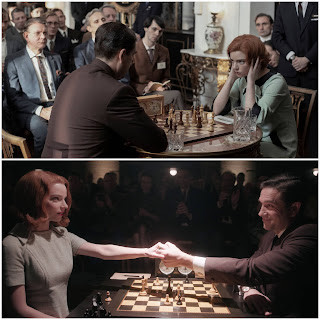
When Shame Leads to Pride: Elizabeth Harmon's greatest moment of shame and the greatest moment of pride Lewis (2000) offers the Cognitive-Attributional Theory which explains the self-conscious emotions of embarrassment, pride, shame, and guilt. According to this model, for each one of us, there is a set of standards, rules, and goals (SRGs) that govern our behavior. Evaluation of the SRGs serves as a stimulus for self-conscious emotions to emerge. Based on this evaluation, we make a decision about success or failure of our actions, thoughts, and feelings. Additionally, we decide if this outcome is our own responsibility (internal evaluation) or if it is due to some outside circumstances/other people (external attribution). Self-attribution can be global (refers to the total self) or specific (refers to specific actions). Based on this model, Lewis defines shame as a "consequence of a failure evaluation relative to the SRGs when the person makes a global evaluation of the self...





